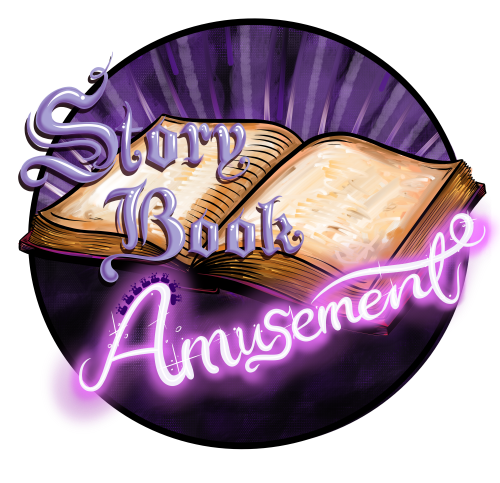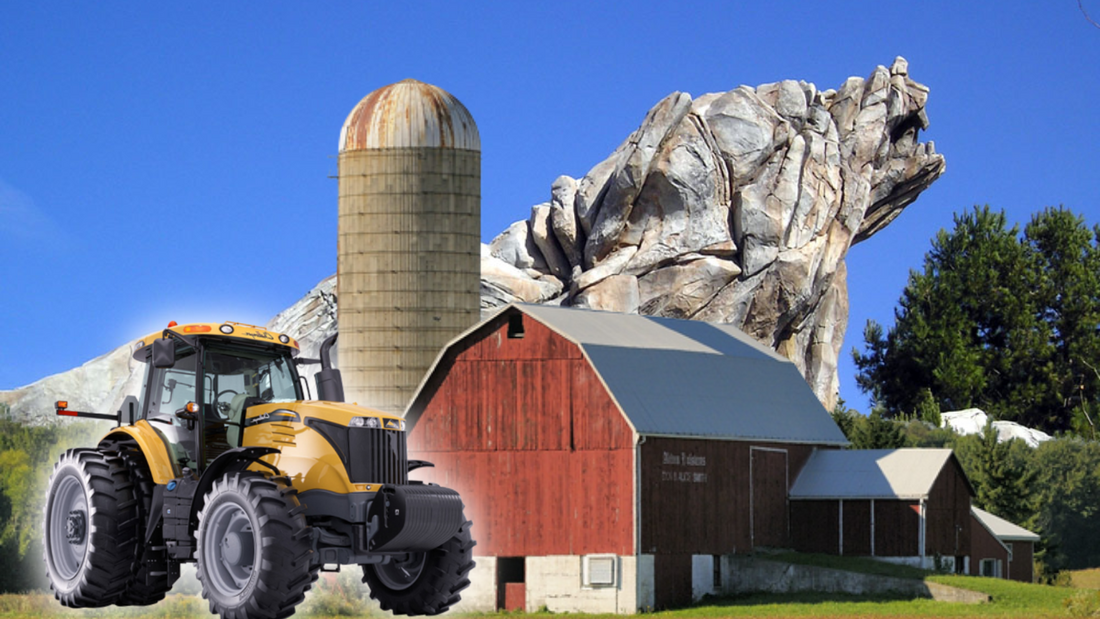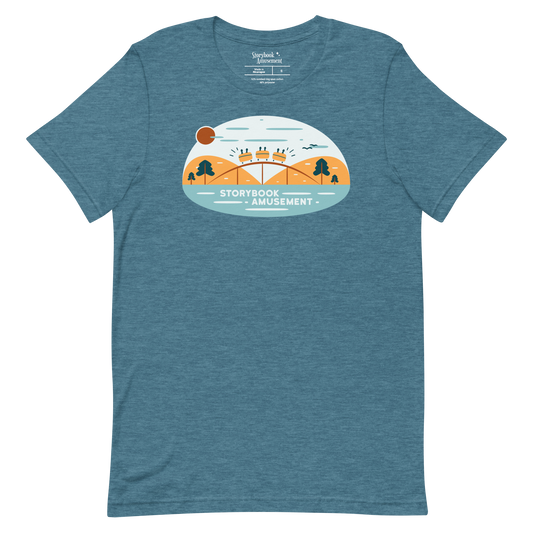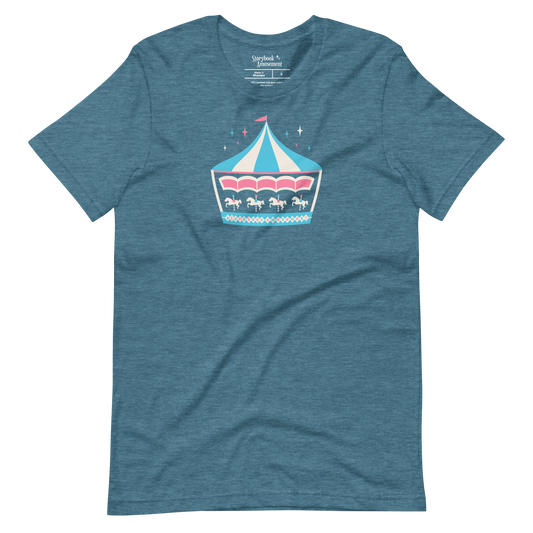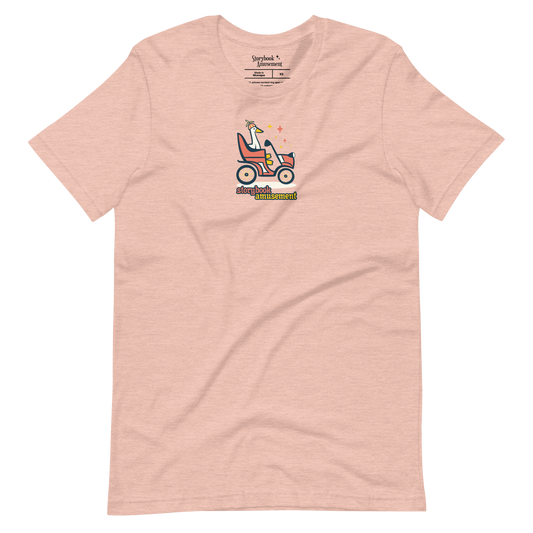Roots in Agriculture
Do you ever think about your favorite theme park and wonder what used to be there?
In the case of Disneyland, Walt Disney was incredibly strategic and methodical when choosing a location. When Walt was planning his first theme park in the 1950s, he wanted everything to be just right—the weather, the surrounding area, the interstates leading to the park, and so on.
Walt hired the Stanford Research Institute to scout out and investigate possible sites for the company’s expected amusement park complex. Disney used the firm’s findings on populations, highway access, demographics, and urban growth trends, among other factors, to settle on the perfect location to build Disneyland.
Watch on YouTube
This article is available in video form with accompanying visuals. Click HERE to watch it.
Seeds Planted in Anaheim
Announced in May 1954, Disney paid about $1 million for 160 acres of land in Anaheim, California, nearly 40 miles south of the company’s studios in Burbank. The land had rows of oranges trees and walnut trees—nothing out of the ordinary for California and its agricultural landscape.
The groves would be squeezed dry of their bountiful harvest and cleared to make way for Walt’s wonderland—a park that would quickly become more celebrated than Anaheim itself. In place of the unnoticed orchards, the land would soon welcome millions of kids, families, and park-goers.
About the imminent $9 million theme park, Walt said, “[Disneyland] will be based upon and dedicated to the ideals, the dreams, and hard facts that created America, and it will be uniquely equipped to dramatize these dreams and facts and send them forth as a sort of courage and inspiration to all the world.”
The park would feature themes of nostalgia, promises of an unbuilt future, fantasies from fictional worlds, and educational opportunities from the world we live in.
A Growing Theme Park Plan
Disneyland’s opening in 1955 commenced a new era for the company, changing the landscape of the amusement industry as a whole. The park was like no other at the time—that was until Disney moved forward with a second resort, opening the Florida-based Walt Disney World and Magic Kingdom in 1971 as the company’s first theme park outside of Disneyland and California.
Development continued as Disney’s leadership in the 1980s made a major addition to the Florida resort with its newest park, EPCOT Center: a modified tribute to the late Walt Disney’s vision of Progress City.
The idea of Progress City was appropriate because, literally, that’s what the company was making: progress. In the coming years, The Walt Disney Company had a vision of expanding its resorts, with eager and rapid plans to develop several upcoming theme parks and destinations outside of Anaheim and Orlando.
Disney in the early ‘80s opened its first international park, Tokyo Disneyland, and also Euro Disneyland about a decade later.
Stateside, the company opened its third theme park in Florida, Disney-MGM Studios, and had started Imagineering parks in California called Port Disney and WestCOT as well as an impending Virginia-based park called Disney’s America.
Disney's Original Idea for a Farm in a Theme Park
Set to be located on a 100-acre site near Washington D.C. and hours north of Colonial Williamsburg, Disney’s America was a proposed theme park to be based on the foundations of the United States. Each section of the park was going to be themed to the country’s spirit, innovation, and history.
These lands were to include Crossroads USA, Presidents’ Square, Native America, Civil War Fort, We The People, Enterprise, Victory Field, State Fair, and Family Farm.
The latter, Family Farm, was going to be set to a picturesque mid-century American farm. As the park’s brochure described it, “[Family Farm offers] a cornucopia of pastoral delights and insight into their production, Family Farm pays homage to the working farm—the heart of early American families. Visitors see how crops are harvested, learn how to make homemade ice cream or milk a cow, and even participate in a nearby wedding, barn dance and buffet.”
Family Farm is said to not have any major attractions, but more so capture the essence of a traditional American farm, educating visitors about crops, livestock, and the lifestyle. In fact, it was going to operate as an actual farm to some capacity, with active crops and even real cows guests could milk.
What Happened After the Plans Didn't Produce
Estimated to cost $650 million, Disney’s America was set to open in 1998. However, Disney was forced to cancel the planned theme park following massive controversy as well as political and local pushback over concerns such as the park’s environmental impact, insensitive themes, as well as its effect on the surrounding historical area and landmarks.
The Possibility of Disney's Berry Farm
Disney briefly considered salvaging the plans for Disney’s America into Knott’s Berry Farm, a historical theme park minutes away from Disneyland in California. The small park was accepting bids for the property around the time Disney’s America fell through. If Disney had acquired Knott's Berry Farm, some of the themed lands and attractions from the canceled park would have been actualized.
The Family Farm concept, however, is not known to have been in these altered plans for Knott’s Berry Farm ironically enough, despite the theme park being family-owned and actually being a farm originally.
Regardless, Disney’s bid was rejected by the Knott family, and among other logistical reasons, Disney scrapped the proposed park.
Exploring Other California Theme Park Concepts
Disney still had plans to build a new theme park in California. As the aforementioned Port Disney theme park fell through, Disney focused on Imagineering a West Coast version of EPCOT Center adjacent to the original Disneyland Park.
But in 1994, The Walt Disney Company was rattled in a way that unexpectedly affected its future and plans.
A Sudden, Tragic Change of Plans
Company president, Frank Wells, died suddenly in a helicopter accident. He has been described as the guardrail to the creative then-CEO, Michael Eisner. Eisner relied on the steady and sound guidance of Wells—a voice he could trust when making decisions and green-lighting major projects.
Eisner worked best with a levelheaded business mind whose feedback he valued. With the passing of Frank Wells, Eisner and The Walt Disney Company lost much of their discretion and a practical point-of-view.
This tragedy along with the lackluster and underwhelming opening of Euro Disneyland, Disney scaled back some of its ambitious theme park plans.
WestCOT consequently was canceled, and under the solo leadership of Michael Eisner, The Walt Disney Company moved forward in Imagineering a new experience for the plot of land planned for WestCOT neighboring the original Disneyland Park—an experience that would bring some ideas from Disney’s America to life.
Dreaming of California
Following Frank Wells’ sudden passing as well as the cancellation of WestCOT and many other unsuccessful theme park proposals, Michael Eisner took Disney’s executives on a company retreat to Aspen, Colorado, as the story goes. Their goal for the trip was to brainstorm a reformed concept for Anaheim’s second Disney park.
Together, the executives assessed Disneyland’s target audience, coming to the conclusion that many visitors were locals. The out-of-town tourists who came to the park visited Disneyland as one of their many stops while sightseeing across the state. Disneyland by itself was not a multi-day destination for most tourists. It was one of many attractions in a state rich with things to do. Disney of course wanted to change that.
To expand Disneyland Resort as a wide-ranging point of interest, Disney executives decided on building a second theme park that would celebrate California’s culture, history, and character.
At the pending Disney’s California Adventure theme park, guests would enter through an entrance plaza that looked like a postcard of California, walking by large letters into a seemingly infinite backdrop of all the state had to offer.
If tourists wanted to see the Golden Gate Bridge, they could find a version of it here. Want to visit Hollywood? You could find a pseudo replica at Disney. How about the beautiful national parks of California? Come to Disney. Why visit the rest of California when all the landmarks anyone would want to see were all at Disney’s California Adventure? Or at least, that was Disney’s thinking.
The theme park was going to be a one-stop shop for sightseers to experience The Golden State all at once. It would be a place where guests could enjoy a snapshot of California—its traditions, environments, and trademarks—through different themed lands.
Salvaged Ideas from the Canceled Disney's America
Some of the areas and attractions came from concepts of the canceled Disney’s America theme park, such as the Grizzly River Run raft ride, similar to Virginia’s unbuilt Lewis and Clark Expedition ride; Condor Flats, taking inspiration from Victory Field at Disney’s America; and Bountiful Valley Farm, a reworked version of the canceled Family Farm idea.
The very soil that once had abundant orange groves would soon show the value of farming in California.
Harvesting a New Farm Area
Bountiful Valley Farm in California Adventure retained the educational value Family Farm from Disney’s America would have had with a modernized, California-leaning focus. The land’s exhibits would showcase California’s agricultural history and the industry’s innovations.
Disney saw the importance and value of including this section in its upcoming theme park as agriculture is crucial to how California developed. It has influenced where people live within the state, what they eat, the state’s major industries, and so on.
Topics ranged from growing crops; to irrigation; to tractor displays, which Disney found a major sponsor for.
On paper, the land made sense, especially considering Disney wanted to incorporate an educational aspect highlighting California’s natural history. Time would tell, however, whether the idea would work in a theme park.
As the park’s opening day approached and crews wrapped up construction, Disney executives would soon learn whether Bountiful Valley Farm would blossom or buckle.
Disney's New Park Debuts
Disney’s California Adventure opened Feb. 8, 2001. In true Disney and California fashion, the grand opening ceremony was a big production, with some of Hollywood’s biggest names in attendance.
While the park was highly marketed, it was clear California Adventure was missing the charm of its next-door neighbor and older sibling, Disneyland.
Guests got their first impressions of the park by walking through its entrance, known as Sunshine Plaza. This smorgasbord of California’s character was idyllic—if you squinted. And well, there was a lot to make you squint in this area: tacky signs, clashing colors, irritating music—the very best of what Disney and California could offer.
The entrance set the tone for the quality—or lack thereof—guests could expect in California Adventure.
Moving onto the rest of the park, California Adventure featured three main districts: Hollywood Pictures Backlot, home of the notorious Superstar Limo dark ride; Paradise Pier, with iconic thrill rides serving as the park’s backdrop; and Golden State, a land dedicated to the state’s diverse natural beauty.
Many might know this district for its E-ticket attraction: Soarin’ Over California. However, the district had much more to offer. The Golden State acted as the heart of the California Adventure and was broken up into different sections: Grizzly Peak Recreational Area, Pacific Wharf, Condor Flats, The Bay Area, Golden Vine Winery, and Bountiful Valley Farm.
Exploring Bountiful Valley Farm
This 2.3-acre mini-land let guests learn about and witness first-hand all that California’s agricultural industry has to offer.
It served a purpose as a part of the park’s rich Golden State region, representing the importance of farming in California. The brand-new California Adventure had many thrill-centric rides, but Bountiful Valley Farm offered a slower-paced environment with educational opportunities.
The self-guided area was described on the park map as being, “A ‘growing’ tribute to California’s heartland.” Bountiful Valley Farm featured everything a guest could possibly want when visiting a theme park: rows of growing crops, nice landscaping, and static livestock.
Crops on Display
The majority of Bountiful Valley Farm was made of up small exhibits and displays. The different plots accommodated more than 350 crops produced in California, such as Valencia orange trees, vegetables, and decorative flowers.
Disney used some of the crops grown in the area across the park’s restaurants and donated other crops to charitable organizations.
Some of the garden boxes had educational themes, such as "California Trans-Plants," highlighting the state’s non-native plants, “The ABCs of California Agriculture,” and "Crops That Flopped," about crops that didn’t flourish in California. There was also the “Farmers Outstanding in the Field” section, recognizing 13 Californian farmers.
Bountiful Valley Farm also had minimal livestock representation. Unlike the Family Farm idea to have actual livestock, Bountiful Valley Farm had statues of cattle: one Hereford steer and a Holstein dairy cow, which produce beef and milk respectively.
Interactive Area
Bountiful Valley Farm wasn’t incredibly lively for a land thriving with live plants, produce, and crops. But, the land did have a few small interactive elements, including some farm-themed percussion instruments for kids to play.
One of the land’s standout areas was the Irrigation Station: a play area themed to irrigation, featuring pipes and tubes with flowing water to soak guests.
Bountiful Valley Farm also had a small stage show called Mickey’s Garden Show, allowing small children to participate in a brief hoedown-style performance.
A Taste of Bountiful Valley Farm
Guests of Bountiful Valley Farm could get a bite to eat at the Bountiful Valley Farmers Market and cool down with a fan-favorite milkshake from Sam Andreas Shakes.
The land also had a few shopping locations, including the Santa Rosa Seed and Supply, where guests could buy souvenirs as well as farm- and garden-themed keepsakes
Tractors You Could Ride Look At
Bountiful Valley Farm might be most commonly characterized—for better or worse—by its sponsor, Caterpillar Inc., one of the world’s leaders in heavy machinery.
The area had various models of tractors on display, including an antique machine, for guests to admire, with some being set up so kids could hop aboard. Caterpillar tractor murals were on display, and signage laid out the history of the company in addition to its founders, Benjamin Holt and Daniel Best.
As the world’s most elaborate advertisement for tractors, Bountiful Valley Farm had specifically trained cast members available in this section to answer questions about Caterpillar machines.
The Caterpillar Cart was a small merchandise stand where guests could buy souvenirs to make their friends at home jealous that they saw tractors at Bountiful Valley Farm.
The Main Attraction
While it did have tractors, Bountiful Valley Farm had no rides, but that’s not entirely surprising for a park that opened with more restaurants than rides.
It did, however, have a major attraction familiar to guests who have visited Disney’s Animal Kingdom, and that was the 4-D show, It’s Tough to be a Bug. This was nearly identical to Florida’s installment, but instead of going inside an artful baobab tree, the version in California took guests “underground” into a 430-seat theater. The experience was a 4-D show with animatronics and special effects, following the story of the characters from A Bug’s Life.
The show building for It’s Tough to be a Bug had a mural of a farm, acting as a scenic backdrop for the land.
It’s Tough to be a Bug was the land’s most popular attraction, and Disney would use the show as a cornerstone for the land’s not-so-fruitful future.
What was Wrong with Bountiful Valley Farm?
Bountiful Valley Farm was never meant to be a headline attraction—rather, it offered balance in a park packed with thrills. It fit comfortably into the park’s diverse Golden State district, which was the heart of California Adventure.
Unfortunately, California Adventure as a whole fell short. Its major attractions were underwhelming, and a supporting land like Bountiful Valley Farm, while fun for young kids and nice for a change of pace, didn’t do much to elevate the disappointing theme park.
But to understand why this was the case, we have to look at the big picture of California Adventure.
Understanding the Failure of DCA 1.0
California Adventure was built on a budget following the economic failure of Euro Disney earlier in the ‘90s. Euro Disney reportedly had a budget in the billions of dollars range. The Walt Disney Company, wanting to avoid a repeat of Euro Disney, was hesitant to invest that much money into a new theme park. Disney’s California Adventure was estimated to cost around $200 million, a fraction of the company’s Paris park.
That small budget, however, was a noticeable issue once the park opened. Perhaps with the right theme and great ideas, California Adventure could have overcome a limited budget.
Missing the Mark
While the park had wit and distinctive qualities, it didn’t have the charm a Disney park usually does. It had qualities similar to a standard amusement park that weren’t of interest to Disney parkgoers. And, as it turns out, building a California-themed attraction in California didn’t have the appeal Disney’s executives were anticipating.
Disney’s California Adventure saw 5 million visitors come through the turnstiles in its first year. Compared to Disneyland’s 12 million guests in that same time period, more than double, it was safe to say guests had a preference, and California Adventure clearly needed to change to be half as successful as The Walt Disney Company wanted it to be.
Disappointing Attractions
The park’s headlining attractions weren’t enough to draw in large crowds. One of the park’s marquee rides, Superstar Limo, closed permanently in less than a year. The regretful ride was reportedly so bad that guest satisfaction was higher when the ride was closed.
That’s just one example of what went wrong. The mistakes were park-wide.
New Rides That Fit the Disney Brand
Since the short-lived Superstar Limo was a family ride, the thrill-heavy California Adventure needed additional family-focused attractions that would appeal to Disney’s guests. Given that, the park planted seeds for new attractions to join an area in need of improvement: Bountiful Valley Farm.
Bountiful Valley Farm Gets a New Harvest
Bugs Infest the Farm
A little over a year after California Adventure opened, Disney put its first bandage on the disappointing theme park. In a brash attempt to improve California Adventure, Disney debuted its first Pixar-themed land: A Bug’s Land.
With the updates, Disney salvaged the underwhelming Bountiful Valley Farm by adding A Bug’s Life characters to the existing displays, including the land’s iconic mural. The new theming accompanied the existing It’s Tough to be a Bug 4-D show. Also, one of the shopping locations, Santa Rosa Seed and Supply, was renamed P.T. Flea Market to fit the new theme.
Adding Flik's Fun Fair
A Bug’s Land was a blend of the lightly reimagined Bountiful Valley Farm and the first expansion in the park’s history: Flik’s Fun Fair. In this land, guests were shrunk down to the size of a bug as they explored giant sets that made them feel tiny.
Flik’s Fun Fair featured family-friendly rides: Flik’s Flyers, Francis’ Ladybug Boogie, Tuck and Roll’s Drive ‘Em Buggies, and Heimlich’s Chew Chew Train, in addition to the Princess Dot’s Puddle Park play area.
While these attractions were not major, the additions and updates made the existing Bountiful Valley Farm more popular, but its future was far from bountiful.
Was It Enough?
Even with the added Pixar theming, Bountiful Valley Farm was still sponsored by Caterpillar Inc.—at least until 2006, five years after the park’s grand opening. That year, the tractors were removed entirely, and Bountiful Valley Farm was quickly losing its intent. While yes, Bountiful Valley Farm was still listed on the park map, its signifying elements were fading with each passing year.
Likewise, California Adventure had gone through major improvements to bring the park to Disney’s signature standard. Disney was investing billions of dollars into improvements for California Adventure, outclassing the limiting $200 million price tag when the park was built.
The main entrance had been completely redeveloped, ground-up rides were being added, and opening-day attractions were being overhauled. Very little of the original California Adventure was safe from change.
Bountiful Valley Farm was not up to pace with the direction California Adventure was headed. Its simplicity produced very little for a park in the midst of renovation.
On Sept. 6, 2010, Bountiful Valley Farm shut down for good and was mowed over to make room for one of Disney-Pixar’s most popular film franchises.
A New Era Radiates
Estimated at about $1 billion, Cars Land opened summer 2012 in California Adventure. The latest land occupied some of where Bountiful Valley Farm once stood, expanding out into previously undeveloped sections of the park.
Flik’s Fun Fair and the It’s Tough to be a Bug show were still next door, being the only remnants of Bountiful Valley Farm. However, in March 2018, It’s Tough to be a Bug closed permanently, with Flik’s Fun Fair being squashed shortly after in September of that year.
A Super Addition
In this location and by expansion, Disney has since incorporated one of its more valuable franchises with a new themed land: Avengers Campus. As of 2021, this section is far from its roots as a farm. However, though gone, Bountiful Valley Farm and A Bug’s Life are not completely forgotten in the park. Seeds of the past can be found around the area today.
Remnants of Bountiful Valley Farm
And Flik's Fun Fair
Mater’s Junkyard Jamboree in Cars Land is appropriately located where the infamous Caterpillar tractors once were.
The cows from Bountiful Valley Farm were seen in Disneyland’s Big Thunder Ranch before the area closed in 2016.
In the Pym Test Kitchen at Avengers Campus, two large condiment bottle props were produced by none other than Bountiful Valley Farm, as seen on the label, with the land’s opening year listed as well.
The WEB SLINGERS: A Spider-Man Adventure ride in Avengers Campus was built inside the former It’s Tough to be a Bug venue. Not only that, but 3-D glasses from the defunct show are found in the queue, in addition to a stripped ride vehicle from Heimlich’s Chew Chew Train, which used to operate nearby.
A small section of rock work from the exterior of It’s Tough to be a Bug has survived, comfortably close to a Bountiful Valley Farm reference displaying an acronym including “B.V.”
Ant Man as seen around Avenger’s Campus has carried a shrunken model of Flik’s Fun Fair, keeping the spirit of the land buzzing.
Saying Goodbye to Bountiful Valley Farm
While the sun has set on pastures of the past and those of Bountiful Valley Farm, the sun is shining bright on the next generation of California Adventure.
